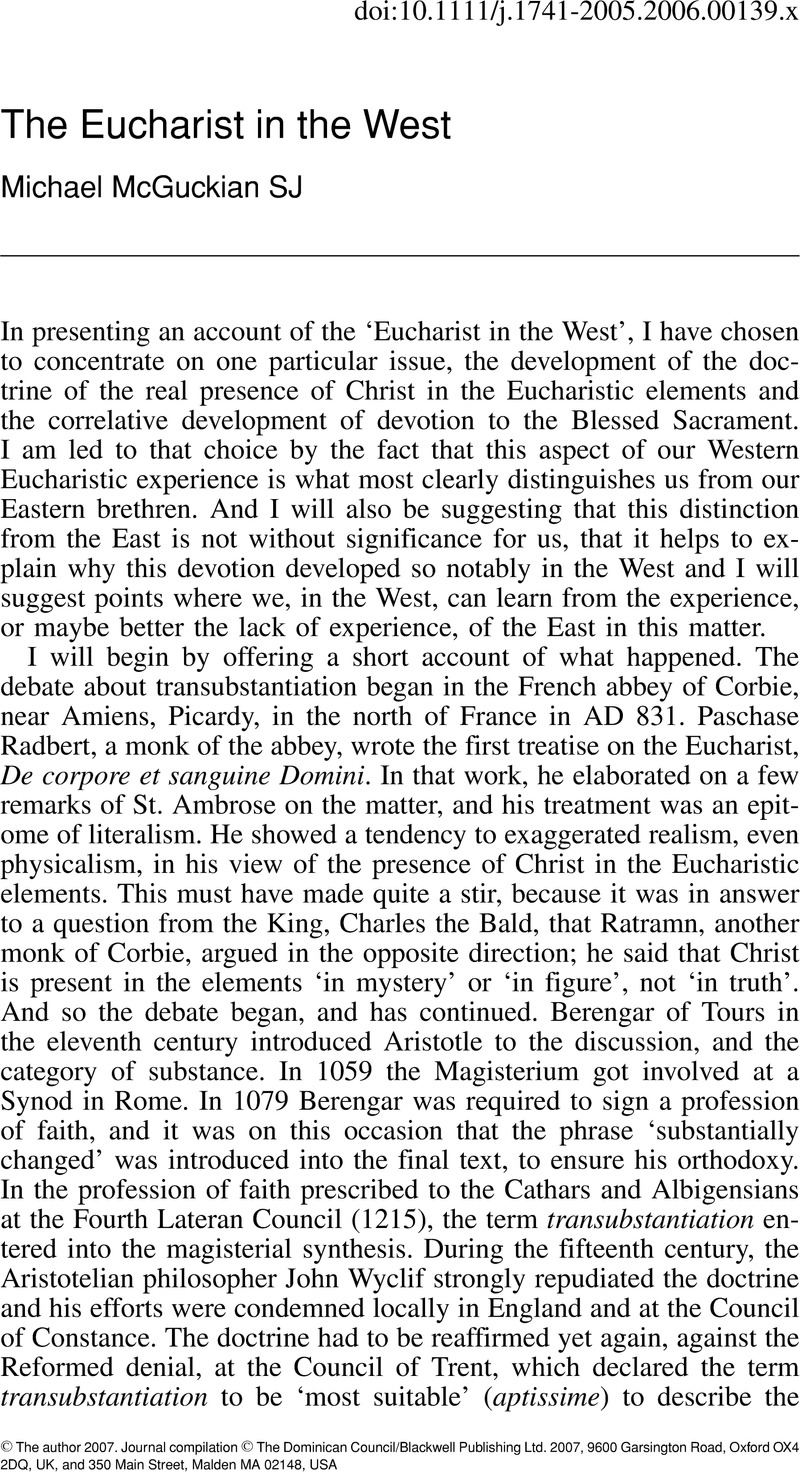No CrossRef data available.
Published online by Cambridge University Press: 01 January 2024

1 In Breaking of Bread: The Eucharist and Ritual (Cambridge, Cambridge University Press, 1993, 2006)Google Scholar.
2 I have presented the fruits of that discovery in The Holy Sacrifice of the Mass: A Search for an Acceptable Notion of Sacrifice (Leominster, Gracewing and Chicago, Hillenbrand Books, 2005) p. 90ffGoogle Scholar.
3 Ware, Timothy, The Orthodox Church (Penguin Books, 1963) p. 269Google Scholar.
4 Lubac, H. de, Corpus Mysticum (Paris, Aubier, 1949) p. 291Google Scholar.
5 Lossky, Vladimir, The Mystical Theology of the Eastern Church (Crestwood, New York, St Vladimir's Seminary Press, 2002) p. 175Google Scholar; Congar, Yves Divided Christendom (London, 1939) p. 12Google Scholar.
6 On this see Denis Faul, ‘Sinners in the Holy Church: A Problem in the Ecclesiology of St Augustine’ in Studia Patristica, Vol IX, Part 3 Berlin, Akademie Verlag, 1966) pp. 404–415Google Scholar.
7 On all this see Lubac, de, The Splendour of the Church (New York, Sheed & Ward, 1956) pp. 13–28Google Scholar.